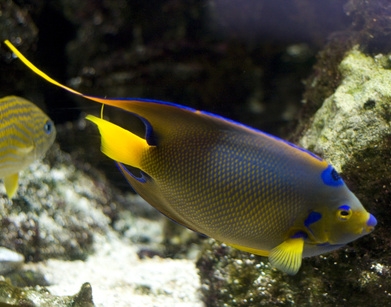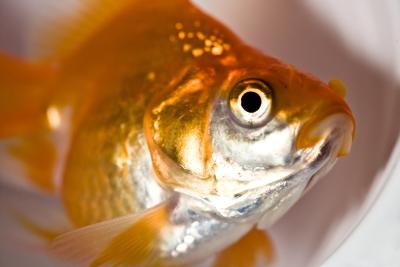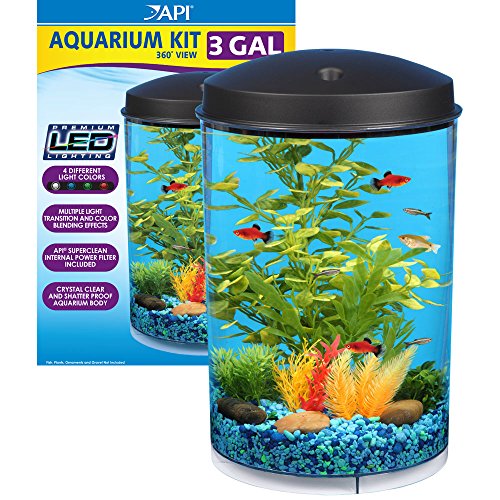
Aquarium water changes are done to keep the water clean, clear, and healthy for your fish. However, they can be a pain in the butt and time consuming to boot. If you are looking at having a beautiful tank of fish that is healthy, but really want to avoid water changes as much as possible there are things that you can do. Most people can't get rid of water changes all together, but some have managed to do just that. Here are some ways you can reduce the number of aquarium water changes you have to do.
The first thing you need to do in order to make sure that you can reduce the number of aquarium water changes that you have to do is understand the nitrogen cycle. The nitrogen cycle is a process by which the ammonia in the tank (released by natural functions of the fish and by decaying matter such as fish food) is processed. First ammonia enters the system. It's toxic to the fish and bad. Next helpful bacteria often referred to as a biological filter consume the ammonia. They release nitrites into the water. This substance is also poisonous to the fish. Another type of bacteria then consumes the nitrites and turns them into nitrates. Now, nitrates are what you get rid of when you do water changes. It isn't as toxic to the fish, but if there is too much of it has the potential to be harmful. This is why you need to do aquarium water changes in the first place. However, the good news is that there are things you can do to reduce your nitrate levels and therefore reduce the number of water changes you need to do each month.
 Credit: The Freshwater Reef
Credit: The Freshwater Reef
Plastic plants are easier to get, inexpensive, and even come in fancy colors. However, real plants grow by taking in ammonia, nitrites, or nitrates. Some plants even grow by taking in all three and this is a good thing. Whenever a plant takes in ammonia or nitrites it removes some of the product that will turn into nitrates. Whenever a plant takes in nitrates it makes the water a little cleaner without you having to do a water change.
You will want to make sure that you choose plants that will grow in the lighting conditions that you have. If you buy a plant that won't do well in your tank then it will make the conditions of your tank worse rather than better. If you haven't done anything to change the lighting in your tank (it's all original) then you will want to buy low light plants.
Another thing to consider is that floating plants take in more nitrates than those that sink to the bottom. It's a good idea to include some floating plants no matter what you are putting in the tank. This will make it so that you have some good plants for removing nitrates.
Some houseplants can also be grown out of the tank. This can be a great way to control nitrates. One good option is the philodendron or pathos plants. You want to stick the plant roots (or end if using a cutting) into the water, but you don't want to submerge the whole plant. Instead find a way to have it grow out of the water.
 Credit: The Freshwater Reef
Credit: The Freshwater Reef
You really want to have a lot of plants so that they can make sure that they are cleaning up the space well. You should consider how much space each plant needs to grow because you don't want too many plants. Careful planning will make it easier for your to tank to be balanced.
Even the happiest plants will need a little care. You want to make sure that they get the best lighting possible, that you give them fertilizer, and that you trim away any dead leaves. This will make sure that your plants don't add to the nitrate levels. Every time a leaf is left to decay in the water it adds to the nitrates.
You also need to be careful about what you fish you put into your tank. It is common to go into a fish store or pet store and see lots of fish swimming around. Most people want their tanks to be full of fish like that. It looks great, lots of color swimming around, and so forth. However, all these fish means way too much fish waste. You should instead stock carefully and lightly.
You want to consider how big the fish is going to get and not how big the fish is when you put it in the tank. You should also consider whether the fish is messier than average or not. Some fish that are messier than average include gold fish, plecos, and algae eaters. Finally, you should consider the amount of fish in the tank. The “basic” rule of thumb is 1” of fish for 1 gallon of water. Add together the total length of what the fishes will be when they are done growing. You should keep it a little lighter than 1” per gallon to keep down the nitrates.
One of the biggest issues that most aquarium keepers have with their fish tanks is over feeding their fish. It is easy to want to give them plenty of food because you fear that they are not getting enough, but this is a really bad idea. Instead, feed carefully. You want to give enough food to fill each fish belly. That's about the same size as their eye. You should give this twice a day. If you have bottom feeders you should put in sinking foods right before turning out the lights to make sure that they are getting plenty of food as well. If there is food left over after they have eaten for one or two minutes you should scoop it up.
The final thing that you should do to make sure that you are taking good care of your tank and to reduce the number of aquarium water changes that you have to do is to clean out any dead fish or other critters. Even if the fish (or other critters) are eating the dead body you want to scoop it up when you notice it to keep the nitrate levels down.
By following these tips you probably won't be able to get rid of water changes altogether. However, you can reduce the need for water changes significantly. You should test the water for nitrates at least once a week and change the water when the levels go about 50 units on your test. This will keep your aquarium fish healthy and happy while giving you a break.
 How to Choose Fish for Mini Aquariums
How to Choose Fish for Mini Aquariums
How to Choose Fish for Mini Aquariums
How to Choose Fish for Mini Aquariums
 Aquarium Heaters
Anyone looking to set up an
Aquarium Heaters
Anyone looking to set up an
 Signs of a Sick Fish
Signs of a Sick Fish
Signs of a Sick F
Signs of a Sick Fish
Signs of a Sick Fish
Signs of a Sick F
 How to Painlessly Kill a Fish
How to Painlessly Kill a Fish
How to P
How to Painlessly Kill a Fish
How to Painlessly Kill a Fish
How to P
 How to Not Kill your Fighting Fish
A little over a year ago, my
How to Not Kill your Fighting Fish
A little over a year ago, my
Copyright © 2005-2016 Pet Information All Rights Reserved
Contact us: www162date@outlook.com